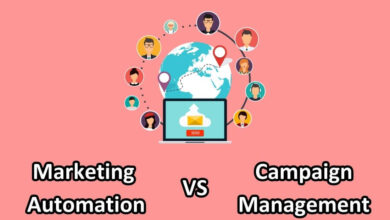Are you torn between Microsoft 365 vs Google Workspace? These two behemoths dominate the market when it comes to productivity tools, but choosing between them can be a tough call. That’s why we’re here to help! In this blog post, we’ll dive deep into every aspect of both platforms – from pricing and integration to support – so you can make an informed decision that suits your business needs. Get ready for a comprehensive comparison that will leave no stone unturned in the battle of Microsoft 365 versus Google Workspace!
Microsoft 365 Vs Google Workspace (Comparison Table)
| Microsoft 365 | Google Workspace |
|---|---|
| Microsoft 365 is a productivity suite of applications, services, and tools developed by Microsoft that allows users to access various services and software built around the Microsoft Office platform | Google Workspace is a cloud computing, productivity, and collaboration platform developed by Google. |
| Microsoft 365 offers different plans for businesses and individuals, ranging from basic to premium. | Google Workspace has four pricing plans – Basic, Business Starter, Business Standard, and Business Plus – with varying features depending on the plan chosen. |
| Microsoft 365 includes Exchange Online for email and Skype for Business messaging. | Google Workspace provides Gmail, Hangouts Meet for video calls, and Hangouts Chat for messaging. |
| Microsoft 365 includes Word, Excel, and PowerPoint, with sharing via SharePoint and OneDrive. | Google Workspace offers Docs, Sheets, Slides, and Forms for collaborative work, stored in Google Drive. |
| Microsoft 365 gives 1TB/user storage through OneDrive for Business. | Google Workspace provides 30GB/user storage, expandable with plans, using Google Drive. |
| Microsoft 365 is compatible with a range of applications such as Microsoft Office Suite, Outlook, SharePoint, Exchange Online, Skype for Business, etc. | Google Workspace integrates with a wide range of apps like Gmail, Hangouts Meet/Chat, Drive, Calendar, etc., as well as third-party tools such as Slack and Salesforce. |
| Microsoft 365 uses multi-factor auth, encryption, and compliance certifications. | Google Workspace has two-step verification, data loss prevention, and robust security features. |
| Microsoft 365 provides an intuitive user interface with an easy-to-use navigation menu. | Google Workspace has a modern and clean interface which makes it easier for users to quickly find the tools they need. |
Microsoft 365 Overview
Microsoft 365 is a cloud-based suite of services, applications, and tools designed to help organizations enhance productivity, security, and collaboration. It includes the popular Microsoft Office suite of apps such as Word, Excel, PowerPoint, Outlook, OneNote, Publisher, and Access.
It also includes features like Exchange Online for email communications and storage; SharePoint Online for document sharing and collaboration; Skype for Business for online meetings and messaging; and OneDrive for cloud storage.
Additionally, it provides enterprise-grade security features like Data Loss Prevention (DLP) and Mobile Device Management (MDM).
Pros and Cons Microsoft 365 Overview
Pros:
- All-in-one Solution: Microsoft 365 is an all-in-one platform that provides users with a variety of services, such as Office applications, Exchange email, OneDrive cloud storage and security.
- Easy Collaboration: The platform allows people to collaborate easily with others no matter where they are located. It also includes advanced features like real-time document collaboration and sharing.
- Cloud Storage: With Microsoft 365 users can store their data in the cloud and access it from anywhere with an internet connection.
- Security: The platform offers various security measures, such as privacy settings, mobile device management, and compliance settings for added protection of your data.
- Flexible Pricing Plans: Microsoft 365 offers several pricing plans to suit the needs of different organizations and individuals.
Cons:
- Lack of Customization Options: Although Microsoft 365 offers some customization options, it may not be enough to meet the needs of all users and organizations.
- Limited Support for Third-Party Applications: Although it supports some third-party applications, there is still limited support for them compared to other platforms such as Google Apps or Salesforce CRM platforms.
- Cost: Microsoft 365 may be expensive for some users and organizations.
- Complexity: The platform can be quite complex due to its multiple features and services, making it difficult for beginners or those with limited technical knowledge to use.
Google Workspace Overview
Google Workspace, on the other hand, is a suite of products and services designed to help businesses stay productive and connected. It includes Google’s popular apps like Gmail, Drive, Docs, Sheets, Slides, Calendar, Meet, and more.
With Google Workspace, businesses can collaborate on projects from anywhere in the world and share documents in real-time. Additionally, Google Workspace offers powerful tools for communication with customers (Hangouts Chat), managing projects (Google Tasks), and tracking data (Google Analytics).
Pros and Cons of Google Workspace
Pros:
- Easy-to-Use: Google Workspace is intuitive and easy to use, allowing even novice users to quickly become familiar with the platform.
- Flexible Collaboration: Google Workspace allows teams to collaborate in real-time from anywhere in the world, making it an ideal choice for remote workforces.
- Comprehensive Suite of Tools: Google Workspace offers an extensive suite of tools that enable users to communicate, store, share, and manage documents, emails, spreadsheets, and other content.
- Cost-Effective: Google Workspace is a cost-effective solution for businesses of all sizes as it is available on a subscription basis with discounted rates for enterprise plans.
- Cloud Storage: Google Workspace also provides cloud storage so that teams can access their files from any device at any time.
Cons:
- Limited Customization Options: While users have some control over branding and design elements within their workspace, there are limited customization options available within the platform itself which may be restrictive for businesses requiring more flexibility and control over their workspace design and setup.
- Lack of Integration With Third-Party Applications: Although Google Workspace does offer integration with certain third-party applications, it is limited in comparison to other collaboration platforms.
- Complex Licensing Model: Google Workspace has a complex licensing model and pricing structure which can be confusing for new users.
- Security Concerns: Although Google Workspace does offer security measures such as two-factor authentication and data encryption, there have been some reported security flaws that may cause concern for businesses relying on the platform for sensitive data storage and communications.
Key Differences Between Microsoft 365 and Google Workspace
- Document Collaboration: Microsoft 365 offers users Office applications like Word, Excel, PowerPoint, etc., which are used to create documents that can be shared among team members through SharePoint Online or OneDrive for Business. On the other hand, Google Workspace provides an integrated suite of apps such as Docs, Sheets, Slides, and Forms for users to easily create and collaborate on documents.
- Integration and Compatibility: Microsoft 365 is compatible with a range of applications such as Microsoft Office Suite, Outlook, SharePoint, Exchange Online, Skype for Business, etc. On the other hand, Google Workspace integrates with a wide range of apps like Gmail, Hangouts Meet/Chat, Drive, Calendar, etc., as well as third-party tools such as Slack and Salesforce.
- User Experience And Interface: Microsoft 365 provides an intuitive user interface with an easy-to-use navigation menu. In comparison, Google Workspace has a modern and clean interface which makes it easier for users to quickly find the tools they need.
- Mobile Apps Performance: Microsoft 365 includes mobile apps such as Office Mobile and Outlook Mobile, which are designed to provide users with a seamless experience across all devices. On the other hand, Google Workspace includes mobile apps like Gmail, Hangouts Meet/Chat, Drive, Calendar, etc., which are great for accessing and collaborating on documents from any location.
- Difference Between Google Sheets and Excel
- Difference Between Google Fi and Verizon
- Difference Between Google Fi and Google Voice
Web Applications in Microsoft 365 and Google Workspace
Microsoft and Google offer different approaches to web-based productivity applications. While Microsoft Office 365 is a suite of desktop applications that are also available online, Google Workspace is a set of web-based applications that work together seamlessly. They include the following applications:
Microsoft 365 Applications
Microsoft Office 365 includes Word, Excel, PowerPoint, OneNote, and Outlook. These applications are available online through a web browser, as well as on your desktop or mobile device.
With an Office 365 subscription, you can access your files from anywhere and collaborate with others in real-time. Office 365 also includes 1 TB of storage per user, so you can keep all your files in one place.
Google Workspace Applications
Google Workspace (formerly G Suite) includes Gmail, Calendar, Drive, Docs, Sheets, Slides, Sites, and Hangouts. These applications are all web-based and work together seamlessly. With a Google Workspace subscription, you get unlimited storage and the ability to share documents and files with others in real-time.
Google Workspace also includes video conferencing and screen-sharing capabilities so you can collaborate with others no matter where they are.
Choosing the Right Fit
When it comes to choosing a productivity suite for your business, there are many factors to consider. But, three of the most important considerations are pricing, integration, and support. Here’s how Microsoft and Google Workspace stack up in each of these areas:
Pricing:
- Microsoft Office 365 Business Premium: $12.50/user/month (billed annually)
- Google Workspace: $6/user/month (billed monthly) or $5/user/month (billed annually)
Integration:
- Microsoft Office 365: integrates with over 100 third-party apps and services
- Google Workspace: integrates with over 200 third-party apps and services
Support:
- Microsoft Office 365 Business Premium: 24/7 phone and web support; live chat support is available during business hours
- Google Workspace: Email and forum support only; live chat and phone support is not available
Overall, selecting between Office 365 and Google Workspace depends on your business’s unique needs and preferences. Consider the size of your organization, collaboration requirements, existing technology stack, and familiarity with the platforms. Both options offer extensive integration possibilities, enhancing your productivity ecosystem.
Conclusion
Microsoft 365 and Google Workspace are both excellent tools for businesses of any size. While the pricing, integration, and support may vary depending on your needs, they both offer a range of features that can help you get the most out of their respective platforms.
Before making a final decision about which one is best for you, be sure to take into account all of the factors listed above as well as your individual business requirements in order to make an informed choice. With this information in hand, you should have no trouble deciding which platform will be best suited for your company’s goals.
FAQs
Is Microsoft 365 suitable for Mac users?
Yes, Microsoft 365 offers versions compatible with Mac systems.
Can I use Google Workspace offline?
Yes, Google Workspace allows offline access to documents using browser extensions.
Which platform offers better mobile app performance?
Both platforms offer robust mobile apps, with Microsoft 365 mirroring the desktop experience and Google Workspace focusing on quick editing and accessibility.
Is it possible to switch from one platform to the other?
Yes, businesses can transition between platforms, but it may involve data migration and adaptation to new workflows.
Do these platforms integrate with third-party applications?
Yes, both Microsoft 365 and Google Workspace support integration with a range of third-party tools to enhance productivity.
Should I switch from Google Workspace to Microsoft 365?
The decision to switch depends on the specific needs of your business. Evaluate the features of both platforms to determine which is most suitable.



